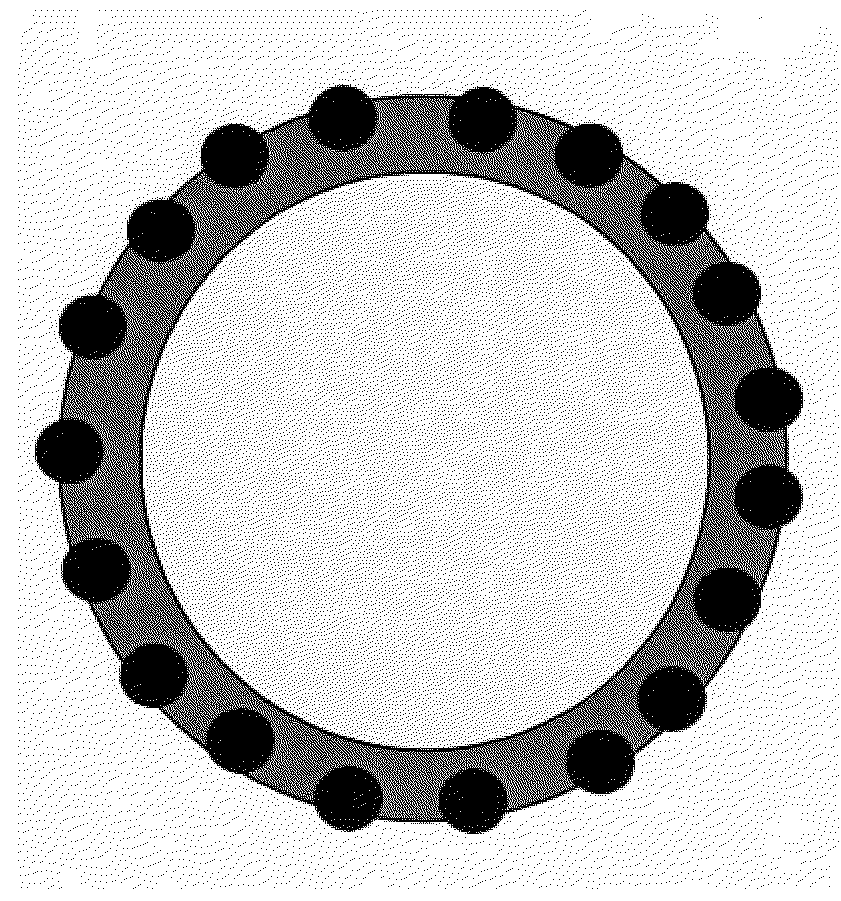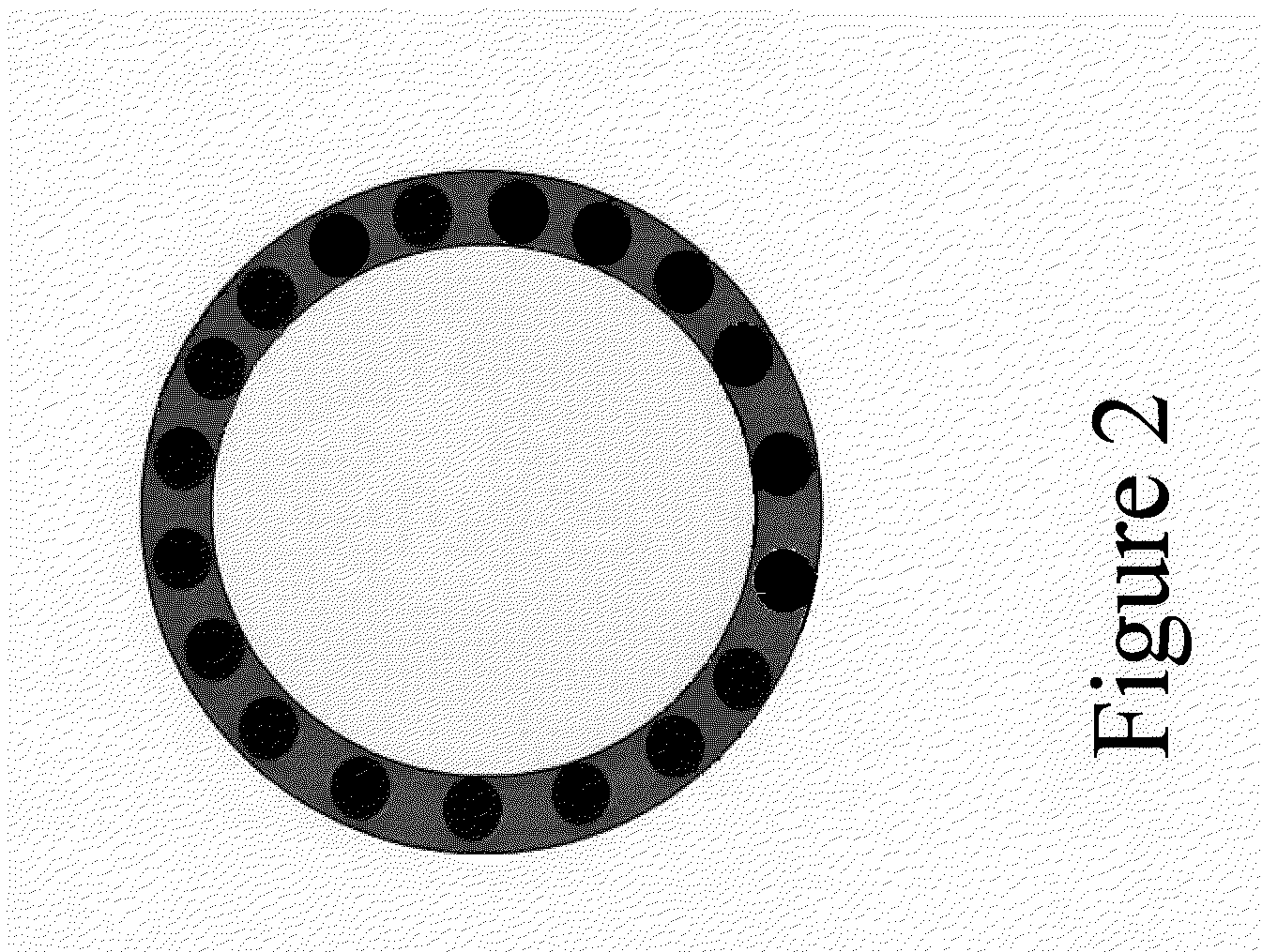Method for the prevention of nanoparticle agglomeration at high temperatures
a nanoparticle agglomeration and high temperature technology, applied in the field of nanoparticles, can solve the problems of reducing particle specific surface area, reducing the effectiveness of various applications, and lack of consistent distribution and density
- Summary
- Abstract
- Description
- Claims
- Application Information
AI Technical Summary
Problems solved by technology
Method used
Image
Examples
example i
[0067]This example shows how a barrier layer can be used in a ceramic fiber composite structure to prevent sintering of iron nanoparticles applied to the ceramic fiber surface for enhanced signature control characteristics.
[0068]FIG. 4 depicts system 400 for producing a high temperature ceramic fiber composite with enhanced signature control characteristics in accordance with the illustrative embodiment of the present invention. System 400 includes a ceramic fiber 402, barrier coating solution bath 404, nanoparticle solution bath 406, coating curing system 408, filament winding system 410, and a resin infusion system 412, interrelated as shown.
[0069]The ceramic fiber 402 used is a Silicon Carbide Sylramic™ fiber tow (1600 denier10 micron diameter) (COI Ceramics, Inc).
[0070]A barrier coating 404, consisting of the Starfire SMP-10, RD-212a solution is applied to the ceramic fiber 402 via a dip process. A diluted solution of 1 part SMP-10 and 10 parts isopropyl alcohol is used in the d...
example ii
[0076]This example shows how carbon nanotubes (CNTs) can be grown on the surface of a carbon fiber using a barrier coating to prevent sintering of the iron nanoparticle catalyst.
[0077]FIG. 5 depicts system 500 for producing CNTs on carbon fiber (34-700 12 k unsized carbon fiber tow with a tex value of 800—Grafil Inc., Sacramento, Calif.) in accordance with the illustrative embodiment of the present invention. System 500 includes a carbon fiber material payout and tensioner station 505, plasma treatment station 515, barrier coating application station 520, air dry station 525, catalyst application station 530, solvent flash-off station 535, CNT-growth station 540, and carbon fiber material uptake bobbin 550, interrelated as shown.
[0078]Payout and tension station 505 includes payout bobbin 506 and tensioner 507. The payout bobbin delivers an unsized carbon fiber material 560 to the process; the fiber is tensioned via tensioner 507. For this example, the carbon fiber is processed at a ...
PUM
| Property | Measurement | Unit |
|---|---|---|
| size | aaaaa | aaaaa |
| temperature | aaaaa | aaaaa |
| spherical diameter | aaaaa | aaaaa |
Abstract
Description
Claims
Application Information
 Login to View More
Login to View More - R&D
- Intellectual Property
- Life Sciences
- Materials
- Tech Scout
- Unparalleled Data Quality
- Higher Quality Content
- 60% Fewer Hallucinations
Browse by: Latest US Patents, China's latest patents, Technical Efficacy Thesaurus, Application Domain, Technology Topic, Popular Technical Reports.
© 2025 PatSnap. All rights reserved.Legal|Privacy policy|Modern Slavery Act Transparency Statement|Sitemap|About US| Contact US: help@patsnap.com



